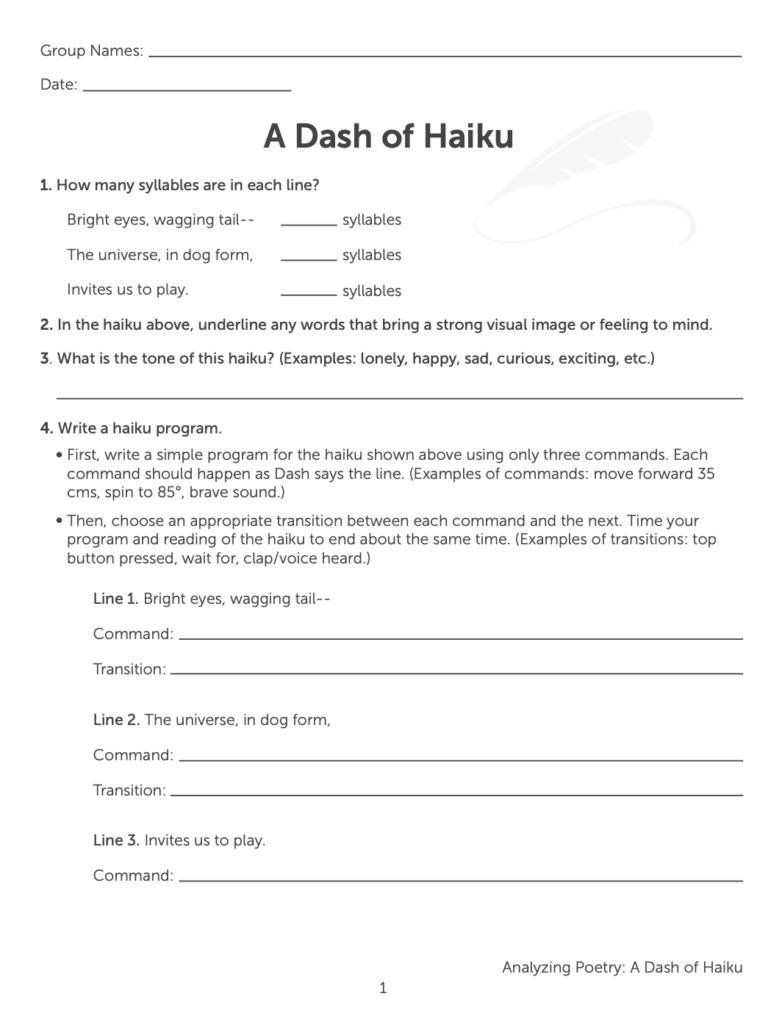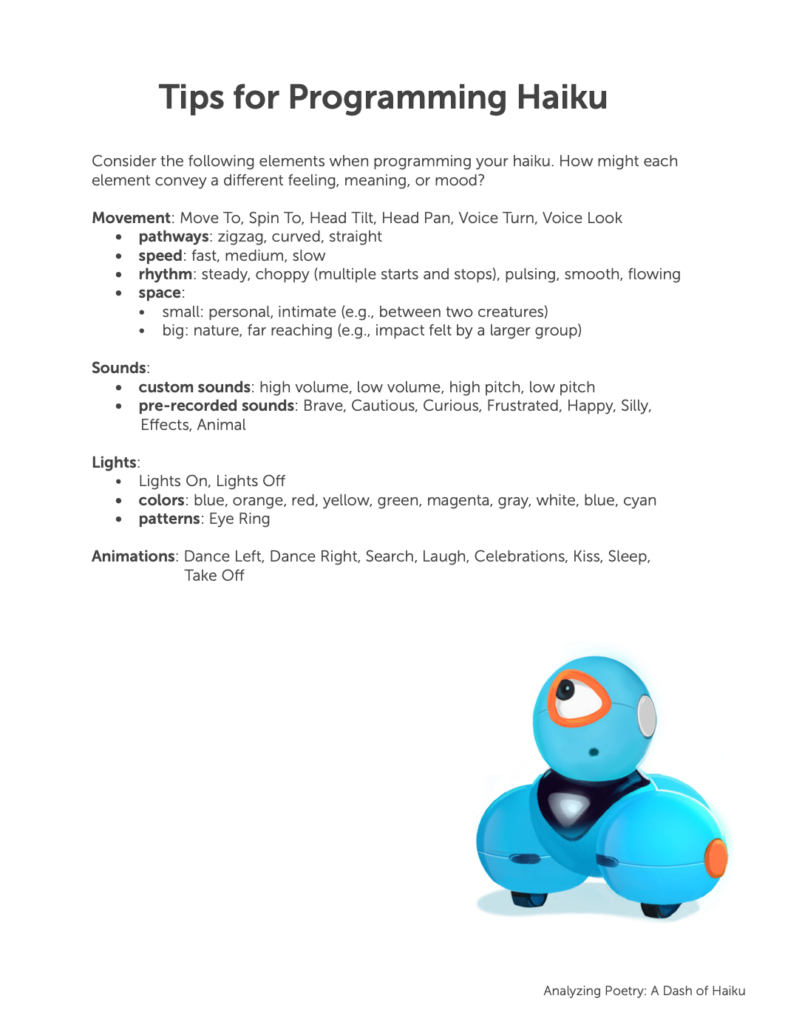Poetry and Coding? You Bet.
April is National Poetry Month—a perfect time to celebrate language and creativity in your classroom. In the two lesson plans featured here, your students won’t just read and write poems: they’ll also program a Dash robot to bring those poetic lines to life. By merging verse analysis with hands-on coding, these activities invite learners to dive deeper into the sounds, images, and rhythms of poetry.
This integrated approach helps students engage in new ways, appealing to different learning styles and encouraging collaboration. When kids see their words translated into physical movements, the power of poetry becomes even more tangible. Whether they’re analyzing a poet’s style or crafting their own verses, the connection between language and robotics lets them explore concepts in a dynamic, interactive environment—ultimately expanding their understanding and excitement about both poetry and technology.
Note: You will need to log into the Make Wonder portal to access these lesson plans, but registration is free!
A Dash of Haiku

Teach coding across the curriculum with this Lesson from our Cross Curricular Lesson Library! Teach students all about Haiku’s, have them write a Haiku, and then have them program Dash to act out their Haiku!
Sample Worksheets Included in the Lesson
Dashing Poets
In this lesson, students dive into poetry to experience it with their physical senses—then bring it to life through programming. Working in small groups, they’ll pick out sensory imagery from just two lines of a poem and transform those lines into a set of instructions for Dash. This kinesthetic approach helps them appreciate how words can direct movement and action.
Why kinesthetics and robotics?
Kinesthetics is all about sensing and understanding your body’s movement and position. It’s like having an internal “motion detector” that helps you move and interact. When students tap into this sense, they learn in a more hands-on way, making the experience lively and memorable. They’re also tapping into how we need to program robots. By interpreting poetry through movement, they deepen both their programming skills and their physical awareness—an awesome combination for active, engaged learning.
Note that this lesson is written to be used with the Wonder App, but can be adapted to be taught with Blockly instead.

















